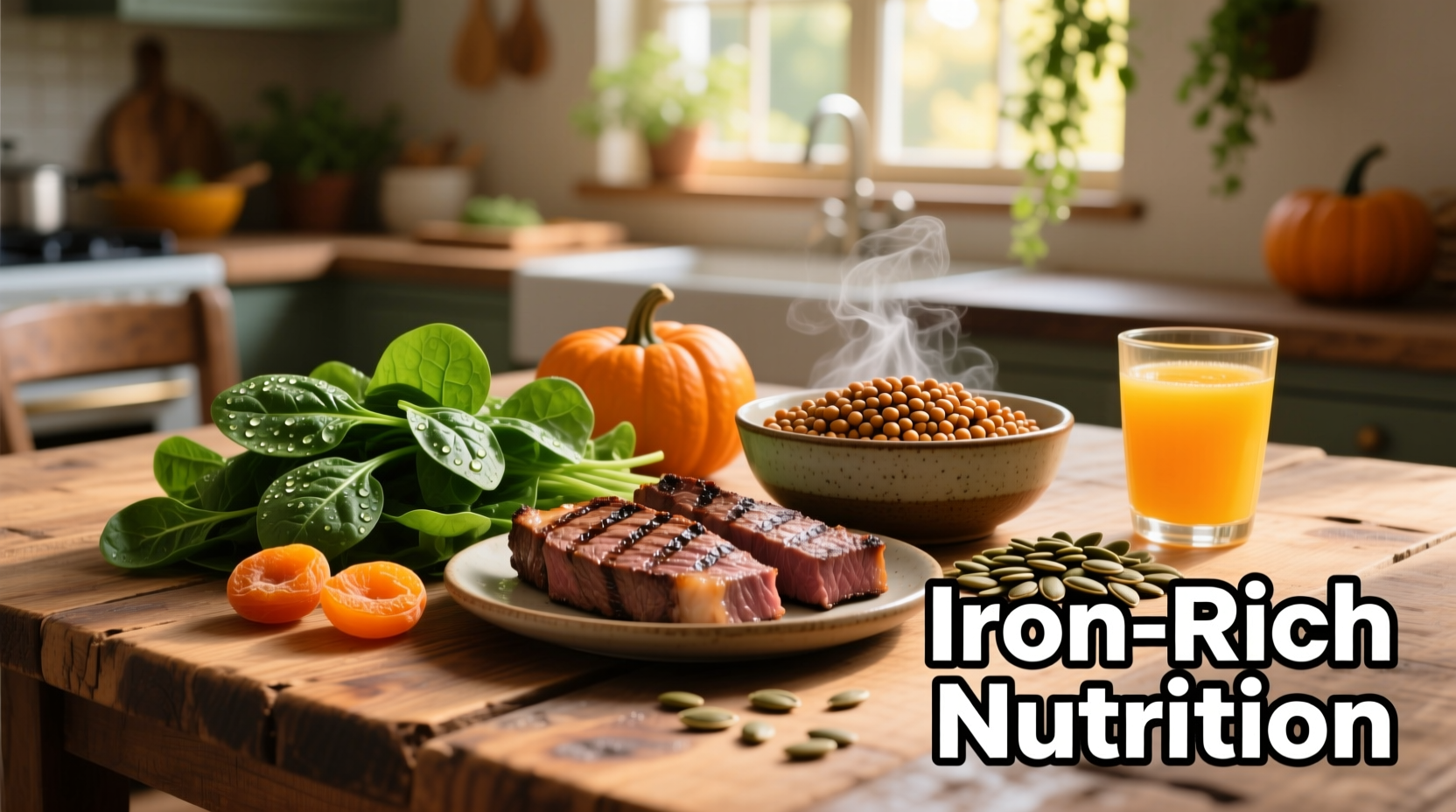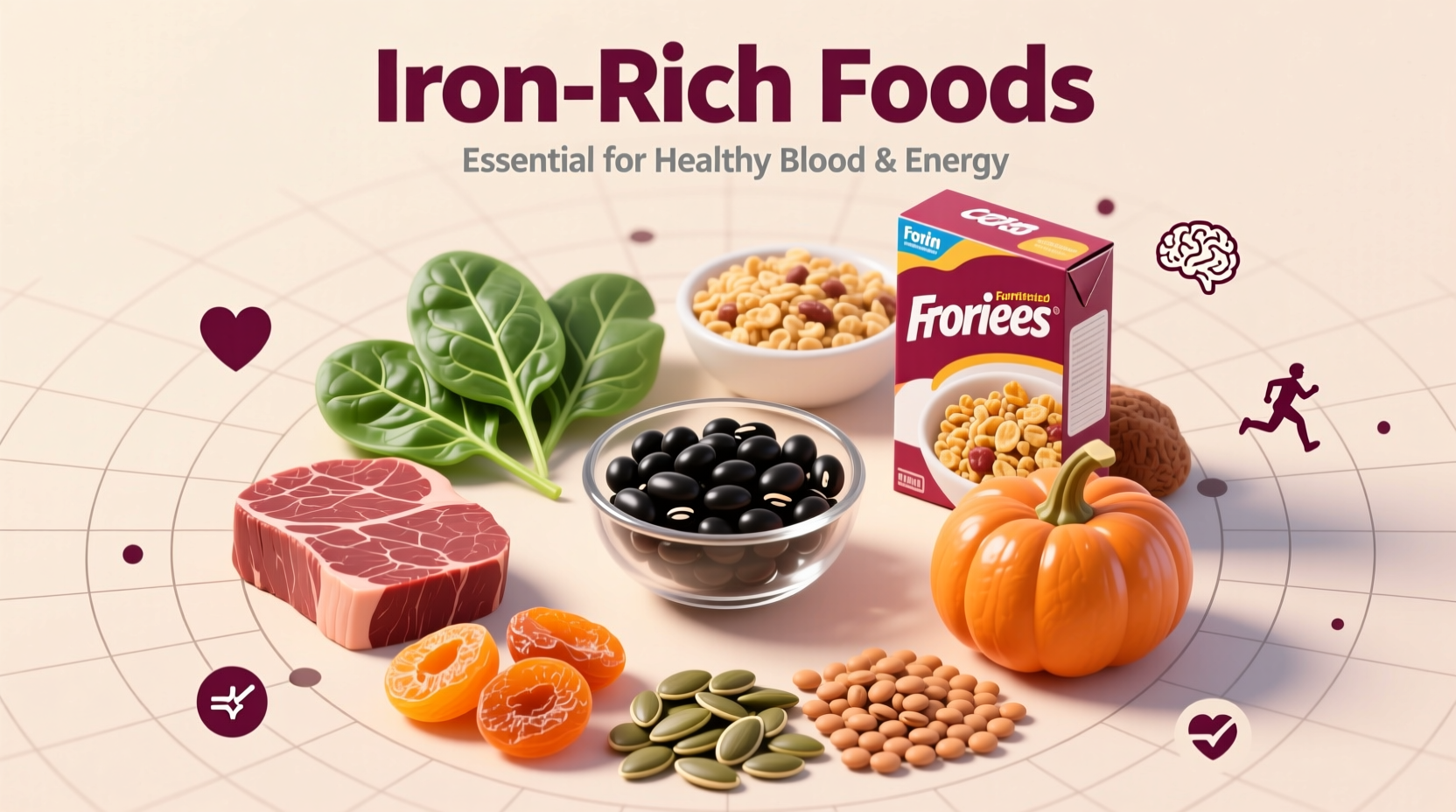Iron deficiency affects over 1.2 billion people worldwide, making it the most common nutritional deficiency globally according to the World Health Organization. The best dietary sources of iron fall into two categories: heme iron (from animal products with 15-35% absorption rate) and non-heme iron (from plant sources with 2-20% absorption rate). Top choices include clams (23.8mg per 3oz), liver (5.2mg per 3oz), lentils (6.6mg per cup), spinach (6.4mg per cooked cup), and fortified cereals (up to 18mg per serving).
Understanding Iron: Why It Matters More Than You Think
Iron serves as the cornerstone of hemoglobin production, carrying oxygen throughout your body. Without adequate iron, you may experience fatigue, weakened immunity, and cognitive difficulties. The National Institutes of Health recommends 8mg daily for adult men, 18mg for premenopausal women, and 27mg for pregnant women. What many don't realize is that iron absorption varies dramatically based on food combinations—vitamin C can boost non-heme iron absorption by up to 300%, while calcium and tannins can inhibit it by 50-60%.
Your Iron Source Roadmap: What to Eat and Why
Not all iron sources are created equal. This roadmap follows your natural decision-making process when planning iron-rich meals:
Immediate Energy Boosters: Highest Bioavailability Options
When you need quick iron absorption—perhaps after a blood donation or during pregnancy—prioritize these highly bioavailable options. Red meat and organ meats provide heme iron, which your body absorbs two to three times more efficiently than plant-based iron. A 3-ounce serving of cooked beef liver delivers 5.2mg of iron with approximately 25% absorption rate—meaning your body utilizes over 1mg immediately.

Daily Maintenance Choices: Balanced Iron Sources
For regular dietary inclusion, these foods offer excellent iron content with practical incorporation into meals. Shellfish stands out as a nutritional powerhouse—just 3 ounces of cooked oysters provides a staggering 7.8mg of iron, while clams deliver 23.8mg per 3-ounce serving. According to USDA FoodData Central, pumpkin seeds (1.3mg per ounce) and quinoa (2.8mg per cooked cup) provide substantial plant-based options that work well in everyday recipes.
Strategic Plant-Based Powerhouses
Vegetarians and vegans can absolutely meet iron needs with smart planning. The key lies in understanding absorption dynamics. Dark leafy greens like spinach (6.4mg per cooked cup) and Swiss chard (4mg per cooked cup) contain impressive iron levels, but their oxalate content reduces bioavailability. Pair them with vitamin C-rich foods—like bell peppers or citrus—to dramatically improve absorption. Research published in the American Journal of Clinical Nutrition confirms that consuming 100mg of vitamin C alongside plant-based iron sources can increase absorption by up to threefold.
| Food Source | Iron (mg per serving) | Best Paired With | Absorption Boost |
|---|---|---|---|
| Clams (3oz) | 23.8 | Lemon juice | 25-35% |
| Lentils (1 cup) | 6.6 | Bell peppers | Up to 300% |
| Spinach (1 cup cooked) | 6.4 | Strawberries | Up to 300% |
| Fortified cereal (1 serving) | Up to 18 | Orange juice | Up to 300% |
| Beef liver (3oz) | 5.2 | N/A (heme iron) | 15-35% |
Avoiding Common Iron Absorption Pitfalls
Many well-intentioned eaters make these critical mistakes that undermine their iron intake:
- Tea or coffee with meals – The tannins in these beverages can reduce iron absorption by up to 60%. Wait at least one hour after eating before consuming.
- Calcium supplements with iron-rich meals – Calcium competes with iron for absorption. Space these nutrients at least two hours apart.
- Overcooking vegetables – While cooking spinach increases iron availability, excessive cooking destroys vitamin C needed for absorption. Steam greens lightly for optimal nutrient retention.
Special Considerations for Different Dietary Needs
Your iron requirements change based on life circumstances. Athletes need up to 70% more iron due to increased red blood cell production and iron loss through sweat. Pregnant women require nearly double their pre-pregnancy intake to support fetal development. Vegetarians and vegans should aim for 1.8 times the standard RDA since plant-based iron has lower bioavailability. The Academy of Nutrition and Dietetics confirms that well-planned plant-based diets can meet iron needs when incorporating strategic food combinations and absorption enhancers.
When Food Isn't Enough: Recognizing the Limits
While dietary sources should be your primary iron strategy, certain conditions require medical intervention. If you experience persistent fatigue, shortness of breath, or pale skin despite consuming iron-rich foods, consult a healthcare provider. Conditions like celiac disease, inflammatory bowel disease, or heavy menstrual bleeding can create iron deficits that diet alone cannot resolve. Never supplement with iron without medical supervision, as excess iron can cause serious health complications including liver damage and increased risk of diabetes.











 浙公网安备
33010002000092号
浙公网安备
33010002000092号 浙B2-20120091-4
浙B2-20120091-4